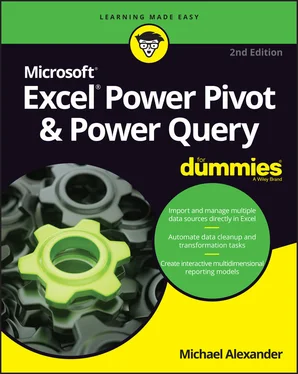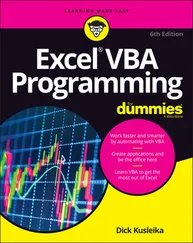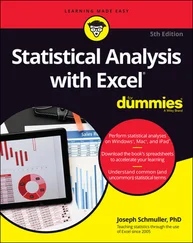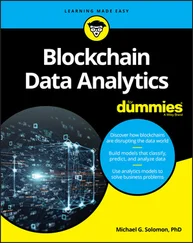Michael Alexander - Excel Power Pivot & Power Query For Dummies
Здесь есть возможность читать онлайн «Michael Alexander - Excel Power Pivot & Power Query For Dummies» — ознакомительный отрывок электронной книги совершенно бесплатно, а после прочтения отрывка купить полную версию. В некоторых случаях можно слушать аудио, скачать через торрент в формате fb2 и присутствует краткое содержание. Жанр: unrecognised, на английском языке. Описание произведения, (предисловие) а так же отзывы посетителей доступны на портале библиотеки ЛибКат.
- Название:Excel Power Pivot & Power Query For Dummies
- Автор:
- Жанр:
- Год:неизвестен
- ISBN:нет данных
- Рейтинг книги:5 / 5. Голосов: 1
-
Избранное:Добавить в избранное
- Отзывы:
-
Ваша оценка:
- 100
- 1
- 2
- 3
- 4
- 5
Excel Power Pivot & Power Query For Dummies: краткое содержание, описание и аннотация
Предлагаем к чтению аннотацию, описание, краткое содержание или предисловие (зависит от того, что написал сам автор книги «Excel Power Pivot & Power Query For Dummies»). Если вы не нашли необходимую информацию о книге — напишите в комментариях, мы постараемся отыскать её.
Excel PowerPivot & Power Query For Dummies
Excel PowerPivot & Power Query For Dummies
Excel Power Pivot & Power Query For Dummies — читать онлайн ознакомительный отрывок
Ниже представлен текст книги, разбитый по страницам. Система сохранения места последней прочитанной страницы, позволяет с удобством читать онлайн бесплатно книгу «Excel Power Pivot & Power Query For Dummies», без необходимости каждый раз заново искать на чём Вы остановились. Поставьте закладку, и сможете в любой момент перейти на страницу, на которой закончили чтение.
Интервал:
Закладка:
Relational database systems inherently separate analytical components into tables, queries, and reports. By separating these elements, databases make data less sensitive to changes and create a data analysis environment in which you can easily respond to new requests for analysis without destroying previous analyses.
You may find that you manipulate Excel’s functionalities to approximate this database behavior. If so, you must consider that if you’re using Excel’s functionality to make it behave like a database application, perhaps the real thing just might have something to offer. Utilizing databases for data storage and analytical needs would enhance overall data analysis and would allow Excel power customers to focus on the presentation in their spreadsheets.
In these days of big data, customers demand more, not less, complex data analysis. Excel analysts will need to add tools to their repertoires to avoid being simply “spreadsheet mechanics.” Excel can be stretched to do just about anything, but maintaining such creative solutions can be a tedious manual task. You can be sure that the sexy aspect of data analysis does not lie in the routine data management within Excel; rather, it lies in leveraging BI Tools such as providing clients with the best solution for any situation.
Getting to Know Database Terminology
The terms database, table, record, field, and value indicate a hierarchy from largest to smallest. These same terms are used with virtually all database systems, so you should learn them well.
Databases
Generally, the word database is a computer term for a collection of information concerning a certain topic or business application. A database helps you organize this related information in a logical fashion for easy access and retrieval. Certain older database systems used the term database to describe individual tables. The current use of database applies to all elements of a database system.
Databases aren’t only for computers. Manual databases are sometimes referred to as manual filing systems or manual database systems. These filing systems usually consist of people, papers, folders, and filing cabinets — paper is the key to a manual database system. In a real-life manual database system, you probably have in-baskets and out-baskets and some type of formal filing method. You access information manually by opening a file cabinet, removing a file folder, and finding the correct piece of paper. Customers fill out paper forms for input, perhaps by using a keyboard to input information that is printed on forms. You find information by manually sorting the papers or by copying information from many papers to another piece of paper (or even into an Excel spreadsheet). You may use a spreadsheet or calculator to analyze the data or display it in new and interesting ways.
Tables
A database stores information in a carefully defined structure known as a table. A table is just a container for raw information (called data ), similar to a folder in a manual filing system. Each table in a database contains information about a single entity, such as a person or product, and the data in the table is organized into rows and columns. A relational database system stores data in related tables. For example, a table containing employee data (names and addresses) may be related to a table containing payroll information (pay date, pay amount, and check number).
To use database wording, a table is an object. As you design and work with databases, it’s important to see each table as a unique entity and to see how each table relates to the other objects in the database.
In most database systems, you can view the contents of a table in a spreadsheet-like form called a datasheet, composed of rows and columns (known as records and fields, respectively — see the following section). Although a datasheet and a spreadsheet are superficially similar, a datasheet is quite a different type of object. You typically cannot make changes or add calculations directly within a table. Your interaction with tables will primarily come in the form of queries or views — see the later section “ Queries”.
Records, fields, and values
A database table is divided into rows (called records ) and columns (called fields ), with the first row (the heading on top of each column) containing the names of the fields in the database.
Each row is a single record containing fields that are related to that record. In a manual system, the rows are individual forms (sheets of paper), and the fields are equivalent to the blank areas on a printed form that you fill in.
Each column is a field that includes many properties specifying the type of data contained within the field and how the database should handle the field’s data. These properties include the name of the field (Company) and the type of data in the field (Text). A field may include other properties as well. For example, the Address field’s Size property tells the database the maximum number of characters allowed for the address.
At the intersection of a record and a field is a value — the actual data element. For example, in a field named Company, a company name entered into that field would represent one data value.
 When working with Microsoft Access, the term field is used to refer to an attribute stored in a record. In many other database systems, including SQL Server, column is the expression you hear most often in place of field — field and column mean the same thing. The exact terminology that’s used relies somewhat on the context of the database system underlying the table containing the record.
When working with Microsoft Access, the term field is used to refer to an attribute stored in a record. In many other database systems, including SQL Server, column is the expression you hear most often in place of field — field and column mean the same thing. The exact terminology that’s used relies somewhat on the context of the database system underlying the table containing the record.
Queries
Most relational database systems allow the creation of queries (sometimes called views). A query extracts information from the tables in the database; a query selects and defines a group of records that fulfill a certain condition. Most database outputs are based on queries that combine, filter, or sort data before it’s displayed. Queries are often called from other database objects, such as stored procedures, macros, or code modules. In addition to extracting data from tables, queries can be used to change, add, or delete database records.
An example of a query is when a person at the sales office tells the database, “Show me all customers, in alphabetical order by name, who are located in Massachusetts and who made a purchase over the past six months.” Or “Show me all customers who bought Chevrolet car models within the past six months, and display them sorted by customer name and then by sale date.”
Rather than ask the question using English words, a person uses a special syntax, such as Structured Query Language (or SQL), to communicate to the database what the query will need to do.
Understanding Relationships
After you understand the basic terminology of databases, it’s time to focus on one of their more useful features: A relationship is the mechanism by which separate tables are related to each other. You can think of a relationship as a kind of VLOOKUP, in which you relate the data in one data range to the data in another data range using an index or a unique identifier. In databases, relationships do the same thing, but without the hassle of writing formulas.
Relationships are important because most of the data you work with fits into a multidimensional hierarchy of sorts. For example, you may have a table showing customers who buy products. These customers require invoices that have invoice numbers. Those invoices have multiple lines of transactions listing what they bought. A hierarchy exists there.
Читать дальшеИнтервал:
Закладка:
Похожие книги на «Excel Power Pivot & Power Query For Dummies»
Представляем Вашему вниманию похожие книги на «Excel Power Pivot & Power Query For Dummies» списком для выбора. Мы отобрали схожую по названию и смыслу литературу в надежде предоставить читателям больше вариантов отыскать новые, интересные, ещё непрочитанные произведения.
Обсуждение, отзывы о книге «Excel Power Pivot & Power Query For Dummies» и просто собственные мнения читателей. Оставьте ваши комментарии, напишите, что Вы думаете о произведении, его смысле или главных героях. Укажите что конкретно понравилось, а что нет, и почему Вы так считаете.












